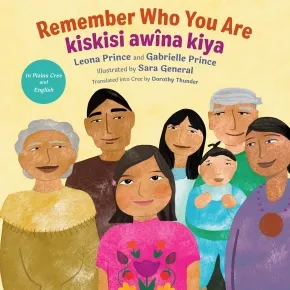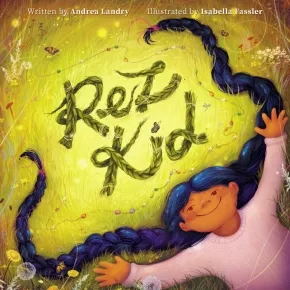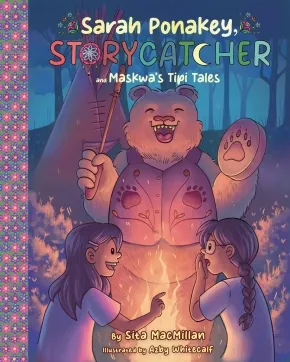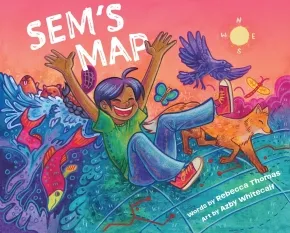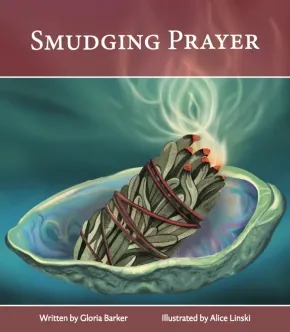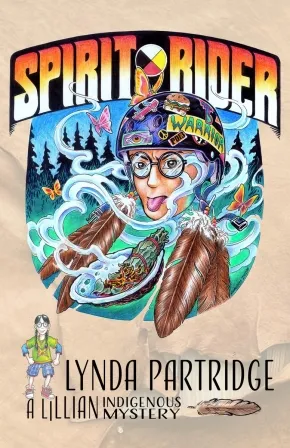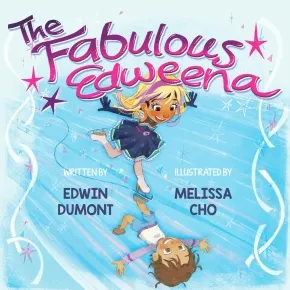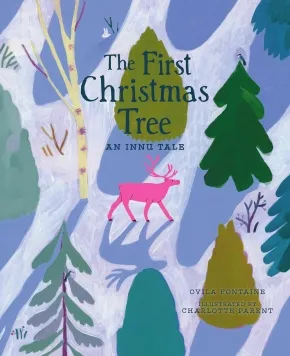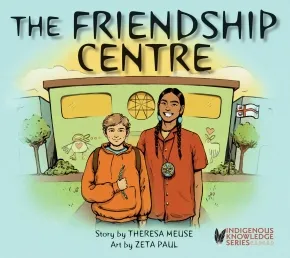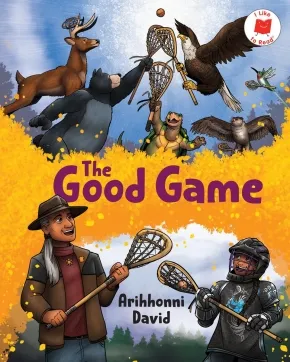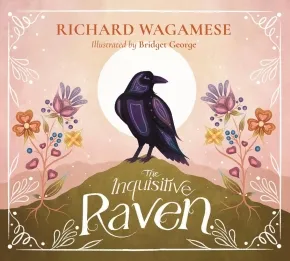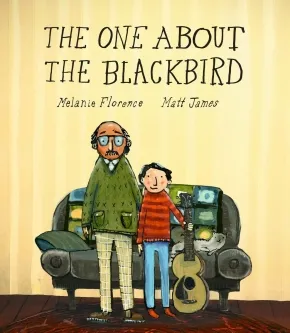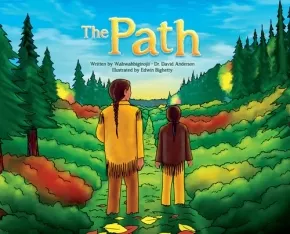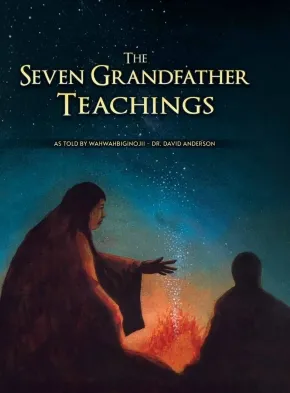
First Nations
91
-
105
of
957 Results;
Sort By
Go To
of 64
Remember Who You Are / kiskisi awîna kiya
$21.95
Format:
Hardcover
Text Content Territories:
Indigenous Canadian; First Nations; Dene; Dakelh (Carrier); Lake Babine Nation ; Nak’azdli Whut’en; Beaver Clan (Lhts'umusuyoo); Cree (Nehiyawak); Plains Cree;
Grade Levels: Preschool; Kindergarten;
ISBN / Barcode: 9781459844360
Synopsis:
Synopsis:
You are more powerful than you imagine.
In this lyrical picture book, young readers are reminded of their cultural roots, the wisdom of their ancestors and their own potential. Each page offers an affirmation about identity, respect, love and truth, encouraging all children to embrace their unique gifts and power. From the resilience flowing through their veins to the knowledge written in the stars, Remember Who You Are inspires children to see themselves as integral parts of their community, capable of great leadership and great kindness.
Perfect for bedtime reading and classroom discussions, this book fosters a deep sense of belonging and pride by celebrating Indigenous heritage and reminding young readers who they truly are.
Educator Information
Recommended for ages 3 to 5.
Dual-language: English and Plains Cree.
Plain Cree translation by Dorothy Thunder.
This book is available in English: Remember Who You Are.
This book is available in French: N'oublie jamais qui tu es.
Additional Information
32 pages | 9.00" x 9.00" | Hardcover
Rez Kid
$21.99
Artists:
Format:
Hardcover
Text Content Territories:
Indigenous Canadian; First Nations; Anishinaabeg;
ISBN / Barcode: 9781525311253
Synopsis:
Synopsis:
A celebration of traditional ways of life and the power of sharing what we have.
”Rez kid!“ The girl ignores the taunt as she hurries to the back of the school bus. She just wants to get home to the reservation, where she can feel safe. One by one, she tells her mom, nóhkom, moshum and aunty about what happened. And one by one they offer her advice on what to do. Each one has a different idea, but each idea is the same at heart: share something from the reservation with the other children. The girl listens, but decides to come up with her own idea. And, as with everything else about her life as a rez kid, her idea grows out of all she has been given by those who came before her.
Andrea Landry has written a beautiful story that celebrates Indigenous ways of life and encourages readers to be proud of who they are. The traditions practiced on the girl’s reservation are showcased as she beads, harvests medicine, gardens and rides horseback with her elders. Isabella Fassler’s stunning art, with swirls of bold colors, evokes the majesty and splendor of nature. The message of showing kindness in response to aggression offers a powerful lesson for all readers. This book could augment social studies lessons on Indigenous cultures and character education conversations about courage, compassion and inclusiveness. An author’s note gives a brief history of reservations/reserves.
Educator Information
Recommended for ages 4 to 7.
Curriculum Connections: Compassion; Courage; Empathy; Inclusiveness; Indigenous peoples; Rural communities
Additional Information
32 pages | 10.00" x 10.00" | Hardcover
Sarah Ponakey, Storycatcher and Maskwa's Tipi Tales
$10.99
Artists:
Format:
Paperback
Text Content Territories:
Indigenous Canadian; First Nations; Cree (Nehiyawak);
ISBN / Barcode: 9781773219509
Synopsis:
Synopsis:
Continue to celebrate Cree culture and being true to yourself in the second book in this vibrant new early chapter book series!
Sarah has spent the best summer visiting Kohkom and her best friend Eden in her home community, but it’s almost time to return to the city and back to school. Eden has been acting odd and distant the past few days, and Sarah can’t quite figure out why: when she finds a tipi surprise in Kohkom’s backyard that Eden has been keeping a secret, Sarah figures that must be the reason!
But as the girls prepare for one last sleepover of the summer, Sarah continues to feel butterflies growing in her tummy when she hears Eden speaking Cree. Eden knows so much more about the language and their culture than Sarah; could that be what’s creating distance between them? As the night goes on, a magical visit from Maskwa reminds the girls that their differences and their culture is what makes their friendship so special.
Sita MacMillan continues to explore topsy-turvy feelings of growing up as a young Indigenous person living away from their community, with magical illustrations from Azby Whitecalf that transport the reader into the forest once again with Sarah Ponakey.
Educator & Series Information
Recommended for ages 6 to 9.
This is the second book in the Sarah Ponakey, Storycatcher series, a vibrant early chapter book series celebrating Cree culture and being true to yourself.
Includes a Glossary of Cree words and English meanings.
Themes: Bears, Jealousy, Tipi, Cree, Indigenous, Culture, Dreams, Storytelling, Friendship
Guided Reading Level: O
Additional Information
120 pages | 6.00" x 7.50" | Paperback
Sem's Map
$14.95
Artists:
Format:
Paperback
Text Content Territories:
Indigenous Canadian; First Nations; Mi'kmaq (Mi'gmaq);
ISBN / Barcode: 9781774714966
Synopsis:
Synopsis:
From the author of I'm Finding My Talk comes a candid picture book about the importance of Indigenous place names, and acknowledging traditional lands.
Sem is confused. The map Mr. Trainer has just put on the screen is all wrong. It's the same shape as Turtle Island but it's nothing but boxes and lines, and it's filled with names he doesn't know. There's no reference to the stories of the land his Kiju tells him every night while she braids his hair. But Sem's teacher and classmates claim there's nothing wrong. It's the same map they've always used.
See tries to see the land the way Mr. Trainer showed him, but it just doesn't feel right. Where is the story of how the moose gets his dinner? Or where the fish run in the spring? Or when to tap the trees for syrup?
With the help of Kiju, Sem will show his teacher and his classmates how the stories of the land, the Indigenous place names, are far older than any map.
A gentle calling-in, this assured story from Governor General's Award finalist Rebecca Thomas is paired with colourful, lively illustrations from Azby Whitecalf, as well as colonial and decolonial maps of Turtle Island (North America) for reference. Sem's Map is an invaluable resource for caregivers, educators, and young readers about the importance of acknowledging the traditional lands we live on, and unlearning colonial ways of the past.
Educator Information
Recommended for ages 5 to 9.
Themes / Subjects: First Nations, Indigenous Knowledge, place names, land acknowledgement, decolonization, history, social studies
Additional Information
32 pages | 10.00" x 8.00" | Paperback
Smudging Prayer
$9.99
Artists:
Format:
Paperback
Text Content Territories:
Indigenous Canadian; First Nations; Anishinaabeg; Ojibway; Hollow Water First Nation (Waanibiigaaw / Wanipigow);
ISBN / Barcode: 9781779550248
Synopsis:
Synopsis:
Written by Gloria Barker, Language Teacher from Hollow Water First Nation, which is located on the east side of Lake Winnipeg, Canada. Hollow Water First Nation is also known as Waanibiigaaw or Wanipigow in Ojibwe. Illustrated by Alice Linski; Alice RL is a member of Ne-biimiskonaan (Skownan) First Nation, Treaty 2 Territory. Alice is a Two-Spirit Anishinaabe artist, illustrator, and art teacher based in Winnipeg, Manitoba. Alice draws inspiration from life experiences and cultural teachings. Alice blends these inspirations with a signature palette of bright, playful hues to create stunning emotional juxtapositions of trauma and grief with hope and a touch of whimsy.
Educator Information
The publisher recommends this work for all ages.
This book is available in English and Anishinaabemowin: Nookwezigewing anami'aawin / Smudging Prayer
Additional Information
Paperback
Spirit Rider: A Lillian Indigenous Mystery
$24.95
Artists:
Format:
Paperback
Text Content Territories:
Indigenous Canadian;
ISBN / Barcode: 9781990735745
Synopsis:
Synopsis:
Spirit Rider is an enchanting mystery for young readers, blending friendship, Indigenous storytelling, and the supernatural. In this third book in the Lillian Mystery series, Lillian and her friends once again find themselves at the crossroads of spirits and secrets. When a mysterious boy on a bicycle appears outside Lillian’s window, his mischievous antics hide a deeper, more haunting purpose. With her gift of communicating with spirits, and the support of her friends Chloe and Grace, as well as her wise Kokum and Auntie, Lillian embarks on a journey to uncover the truth. Can they unravel the mystery of the Spirit Rider? Or will this spirit’s secrets lead them somewhere they never expected?
Reviews
"[Lillian stories are] from the spirit and are messages for all of our First Nations relatives that it is now time to rise up and take this responsibility back to being natural helpers, and to nurture our children who are struggling.”— Robin Decontie, MSW, Director, Kitigan Zibi Health and Social Services
"Spirit Rider was captivating. I was excited to read the more adventures of Lillian. The caregivers were very kind understanding and patient with Lillian. The book is a perfect example of the seven grandfather teachings; love honesty respect bravery humility wisdom and truth. My emotions as the reader was crying and laughing. Thinking of how the spirit rider was feeling through his young life and Lillians jokes she loved sharing even if they didn’t really want to hear. As a retired Aboriginal Indigenous social service worker it was heart warming and I embraced the book whole heartedly of our First Nation children who perhaps have the same story, With Kindness to the Author Miigwech for allowing me to read this it was an honour."- Stephanie Sandy, Nimki Beneshiinh Kwe . Nookmis of Chippewas of Rama First Nation
"Lynda Partridge books have a way of drawing you in. I couldn't put it down. Her latest book Spirit Rider has you from the first page. Her characters and character development are amazing and so relateable to both young and old, indigenous and non indigenous. Her ability to reach the reader both spiritually and culturally is so strong it's almost tangible. Her best to date." —Sandra Herkimer, Mississaugas of the Credit First Nation Elder
Educator Information
Recommended for ages 8 to 13.
This book is part of the Indigenous Spirit of Nature series.
This book is also the third book in the Lillian Mystery series.
Additional Information
194 pages | 5.50" x 8.50" | 6 Black and White Illustrations | Paperback
The Fabulous Edweena
$21.95
Artists:
Format:
Hardcover
Text Content Territories:
Indigenous Canadian; First Nations; Anishinaabeg; Ojibway;
ISBN / Barcode: 9781772604047
Synopsis:
Synopsis:
Edwin loves his sister Patsy's closet. He adores dresses and earrings and boots with high heels. And when he's finished getting dressed, Edwin is transformed...into the fabulous Edweena!
Today is the figure skating competition at school and Edwin has decided to compete as Edweena. What will people say when they meet her for the first time? Can a boy in drag win the competition? Edweena will have to give her best performance ever to find out!
Educator Information
Recommended for ages 6 to 8.
This books available in English and Anishinaabemowin (Ojibwe): Omaamakaadendaagozi Edwiina / The Fabulous Edweena
This title is included in the Indigenous Books for Schools database from the Association of Book Publishers of BC. It is recommended for Grades 1 to 3 for English Language Arts and Physical and Health Education.
Additional Information
24 pages | 8.50" x 8.50" | Hardcover
The First Christmas Tree: An Innu Tale
$24.95
Artists:
Format:
Hardcover
Text Content Territories:
Indigenous Canadian; First Nations; Innu (Montagnais-Naskapi);
Grade Levels: Preschool; Kindergarten;
ISBN / Barcode: 9781459841802
Synopsis:
Synopsis:
It is very cold in the Far North.
The Great Manitou knows that winter is the harshest season for the Innu, and he decides to find a way to make their winters a little brighter. He searches through the trees in the forest to find one who will bring joy, beauty and warmth to all. Could it be the larch, the tree that the Innu use to make sleds, bows or ointments? The birch, malleable and robust? Or the magnificent black spruce? “Do you want to become the Christmas tree?” he asks each one. But one after the other, the trees decline his offer. All except one, the little fir tree, whom the Great Manitou had initially overlooked.
Reviews
“The Great Manitou appears in vibrant fuchsia as various woodland creatures, standing out against the cool winter palette. A Christmas-themed look into Indigenous culture tradition that encourages further exploration.”— School Library Journal (SLJ)
Educator Information
Recommended for ages 3 to 5.
This book is available in French: Le premier arbre de Noël.
Additional Information
56 pages | 8.50" x 10.75" | Hardcover
The Friendship Centre
$13.95
Artists:
Format:
Paperback
Text Content Territories:
Indigenous Canadian; First Nations; Mi'kmaq (Mi'gmaq);
ISBN / Barcode: 9781774714416
Synopsis:
Synopsis:
A modern story of traditional Indigenous knowledge from the author of The Sharing Circle that teaches young readers about the importance of the Friendship Centre for urban Indigenous peoples.
Matthew is visiting his uncle in the big city! He can't wait to tour the Friendship Centre, where Uncle Hunter works, and enjoy all the food, activities, and resources it has to offer.
With language classes, drumming circles, feasts, and more, Matthew learns that the Friendship Centre provides a home away from home for urban Indigenous people. It's a space created for Indigenous people by Indigenous people, and Matthew feels welcomed right away. Matthew drums, smudges, and tastes freshly baked bannock, but his favourite parts of his visit are the people he meets.
From the author of Sweetgrass, The Gathering, and The Sharing Circle, and the illustrator of Muinji'j Asks Why, this story welcomes all into a safe and inviting community space.
Educator & Series Information
Recommended for ages 3 to 7.
This book is part of the Indigenous Knowledge Series.
Additional Information
32 pages | Paperback
The Game
$23.95
Artists:
Format:
Hardcover
Text Content Territories:
Indigenous Canadian; First Nations; Salish; Coast Salish; Musqueam;
ISBN / Barcode: 9781778401756
Synopsis:
Synopsis:
A beautifully illustrated reimagining of the origins of hockey from an Indigenous lens.
Killer Whale and Brown Bear are arguing: Brown Bear says he can beat Killer Whale at any challenge, yet Killer Whale disagrees. When Powerful Mena overhears their bickering, he comes up with a solution: a game on the ice, played with sticks, nets, and a star for a puck. But who will win and earn the trophy?
For kids aged 4-8, The Game features:
- An introduction to Musqueam language and culture
- Beautiful watercolor artwork from a celebrated Haida artist
- Detailed backmatter and a pronunciation guide
With poetic text by gifted Indigenous storyteller Henry Charles (Ten Bears), an elder of the Musqueam First Nation, and breathtaking illustrations by Haida artist, Shoshannah Greene, The Game offers a vibrant introduction to Musqueam language and culture and inspires readers to rediscover a sport we know and love.
Reviews
"This book is written in English with some words in hən̓q̓əmin̓əm̓. It begins with an introduction of the author, Henry Charles (Ten Bears), as the book was published posthumously. The story imagines hockey in the long ago; Mən’ə decided that a game played on ice was the only way for Killer Whale and Brown Bear to settle their dispute. Mən’ə made a trophy for the winner, but when Killer Whale wins, he declines the trophy as he is heading back to the ocean. The reward is then shared with a boy who invited others to witness the game, and he shares it with his people. Students can learn about important traditional practices (witnessing, inviting others to witness, and the use of a game to settle a dispute) through the story. Older students could use the story to learn about sportsmanship and review the characteristics of fair play." - Alethea S., Elementary School Teacher, Indigenous Books for Schools
Educator Information
Recommended for ages 4 to 8.
This title is included in the Indigenous Books for Schools database from the Association of Book Publishers of BC. It's recommended for K to 4 classrooms for English Language Arts and Physical and Health Education.
Additional Information
48 pages | 10.00" x 8.00" | Hardcover
The Good Game (PB)
$12.49
Format:
Paperback
Text Content Territories:
Indigenous;
ISBN / Barcode: 9780823460809
Synopsis:
Synopsis:
How can the small mouse and squirrel play lacrosse with the big animals? A fun Native American tale that first graders can read on their own.
A game of lacrosse is about to begin—with the four-legged animals facing off against the winged animals. Mouse and Squirrel want to join!
But Bear and Deer won’t let animals so small on their team. The birds would welcome the small animals, but Mouse and Squirrel can't fly. The winged team has a clever plan.
This Native American tale about the origin of the bat and flying squirrel is framed by a grandfather sharing a story with his grandson.
Educator & Series Information
Phonics features are noted on the copyright page.
This book has been officially leveled by using the F & P Text Level Gradient(TM) Leveling System. It is a Level I for Grade 1.
The award-winning I Like to Read® series focuses on books for kindergarteners and first graders. Acclaimed author-illustrators create original, high-quality illustrations that support comprehension of simple text and are fun for kids to read again and again with their parents, teachers or on their own!
A Junior Library Guild Gold Standard Selection!
Educator Information
Recommended for ages 4 to 8.
Additional Information
32 pages | 7.77" x 9.99" | Paperback
The Inquisitive Raven
$24.95
Format:
Hardcover
Text Content Territories:
Indigenous Canadian; First Nations; Anishinaabeg; Ojibway;
ISBN / Barcode: 9781771624497
Synopsis:
Synopsis:
Share in a raven’s sense of wonder as this gorgeous picture book brings Richard Wagamese’s wisdom to young audiences.
“Reuben was an inquisitive raven. Of course, all ravens are inquisitive, but Reuben was a notch above even the most curious bird.” So begins a story by beloved author Richard Wagamese, about a raven that has the whole forest talking. Some think he is nosy, but really, he is in a state of utter amazement at the world. He suggests new designs for the beavers’ dams, imitates the blue herons’ one-legged stance as they spear minnows, and squawks in glee at the sight of the bears emerging from hibernation. When he sees an eagle soaring high in the sky, he tries to soar just as high, in order to earn the other animals’ respect—only to learn that respect is not something one earns, but something one carries.
This book is yet another example from Richard Wagamese about the power of storytelling. Beautifully illustrated with original work from Anishinaabe artist Bridget George, The Inquisitive Raven is sure to be cherished by readers of all ages.
Educator & Series Information
Recommended for ages 6 to 8.
This book is part of the Richard Wagamese Storybook Collection.
Additional Information
32 pages | 10.25" x 9.25" | Hardcover
The One About the Blackbird
$24.99
Artists:
Format:
Hardcover
ISBN / Barcode: 9781774882665
Synopsis:
Synopsis:
A gorgeous picture book about the connections created through music, and how music can reach loved ones with dementia.
A young boy learns to play guitar from his grandfather, and the one about the blackbird is their favorite song. Years later, the boy visits his grandfather, and while his grandfather doesn't recognize him, now grown-up, he does still remember how to hold a guitar.
A beautiful full circle moment ensues when the boy plays his grandfather their favorite song.
The moving text and dynamic, gorgeous art celebrate the connection that music can create between two people and the joy that music, and the shared love of it, can bring at any age.
Educator Information
Recommended for ages 4 to 8.
Additional Information
40 pages | 9.50" x 11.00" | Hardcover
The Path
$19.95
Format:
Hardcover
Text Content Territories:
Indigenous Canadian; First Nations; Anishinaabeg; Ojibway;
ISBN / Barcode: 9781779510044
Synopsis:
Synopsis:
This Story follows Grandfather and his Grandson as they walk together down The Path. They will meet many Relatives who each carry a Teaching. Grandfather shares with Grandson the Teachings and their importance.
Educator Information
Recommended for grades 3 to 6.
Additional Information
28 Pages | Hardcover
The Seven Grandfather Teachings
$19.95
Format:
Hardcover
Text Content Territories:
Indigenous Canadian; First Nations; Anishinaabeg;
ISBN / Barcode: 9781779510051
Synopsis:
Synopsis:
There was a time when the Anishinaabeg (Human Beings) were not living together in balance and in Harmony with Mother Earth or with one another.
The Seven Grandfathers asked their Oshkaabewis (Helper/Messenger), to find someone to carry their Teachings. Oshkaabewis met Little Boy and introduced him to The Seven Grandfathers who welcomed Little Boy and shared their Gifts with him. These Gifts are now known and called The Seven Grandfather Teachings.
Educator Information
Recommended for grades 4 to 6.
Additional Information
24 Pages | Hardcover
Sort By
Go To
of 64

